Guide to the Best Entryway Flooring
Stylish and Durable Options for Your Home
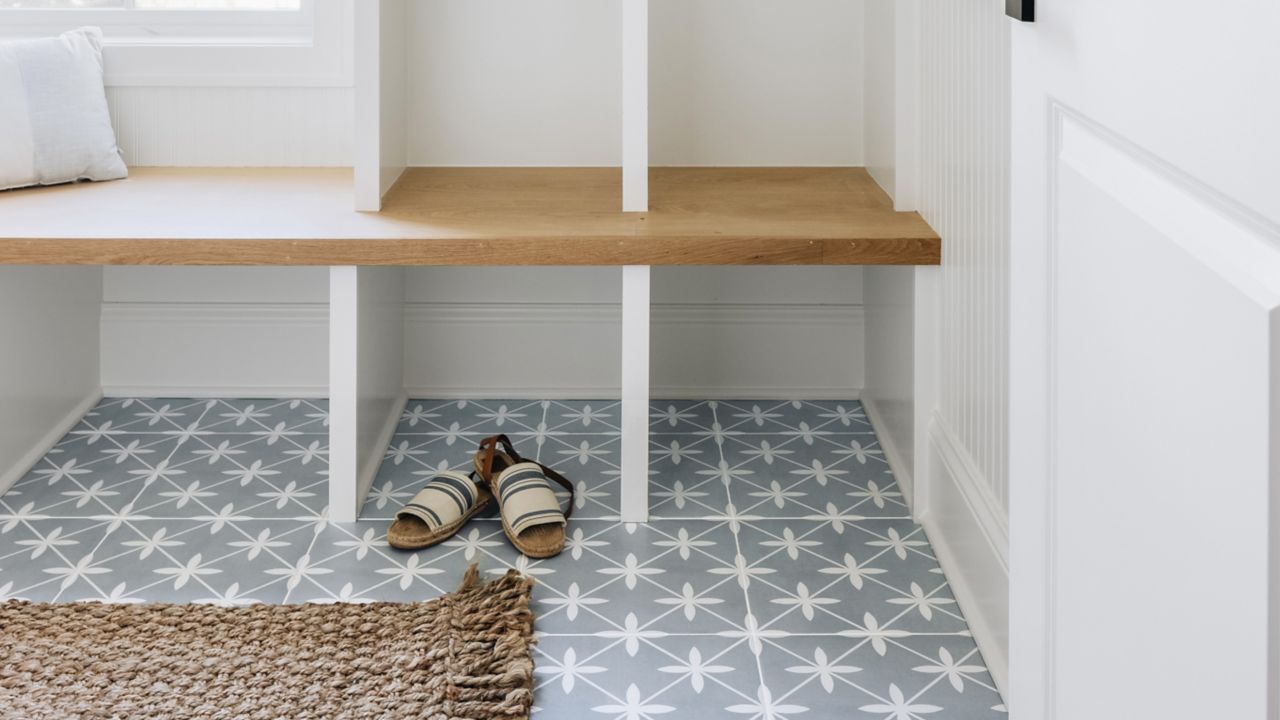
An entryway sets the tone for the rest of a home, and an inviting space will be enjoyed by everyone who comes through the door—whether that’s a half-dozen holiday guests, or you returning home at the end of a long day. An entryway is also a hard-working space, often serving as the landing spot for shoes, backpacks, coats, sports equipment and more, and even the most beautiful entryway floor must also be durable enough to withstand high levels of grit and moisture being tracked inside.
With so many aesthetic and functional factors to balance, picking the right flooring material for your entryway can be tricky. In this article, we will guide you through the variables to consider to help you decide what material is best for your entryway floor.
Factors to Consider When Choosing Entryway Flooring
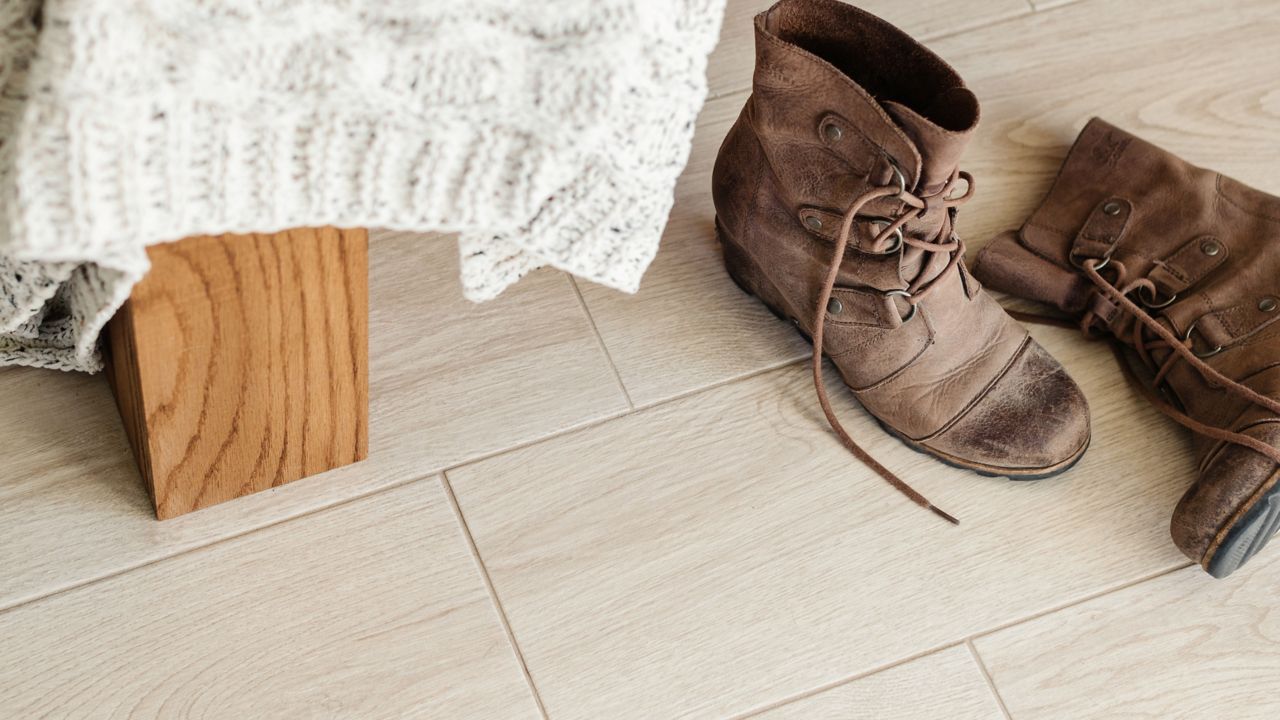
Durability
No matter where you live, chances are you and your loved ones will track dirt and sand into your entryway at least part of the year, if not year-round. This abundance of grit requires flooring that can stand up to scratches, especially since it will likely be ground into the floor with multiple shoes multiple times per day.
And there is another concern that demands durability from your entryway floor: pets. If your home has a dog who greets you at the door every time you come home, you will need to ensure your flooring can stand up to repeated, aggressive scratching.
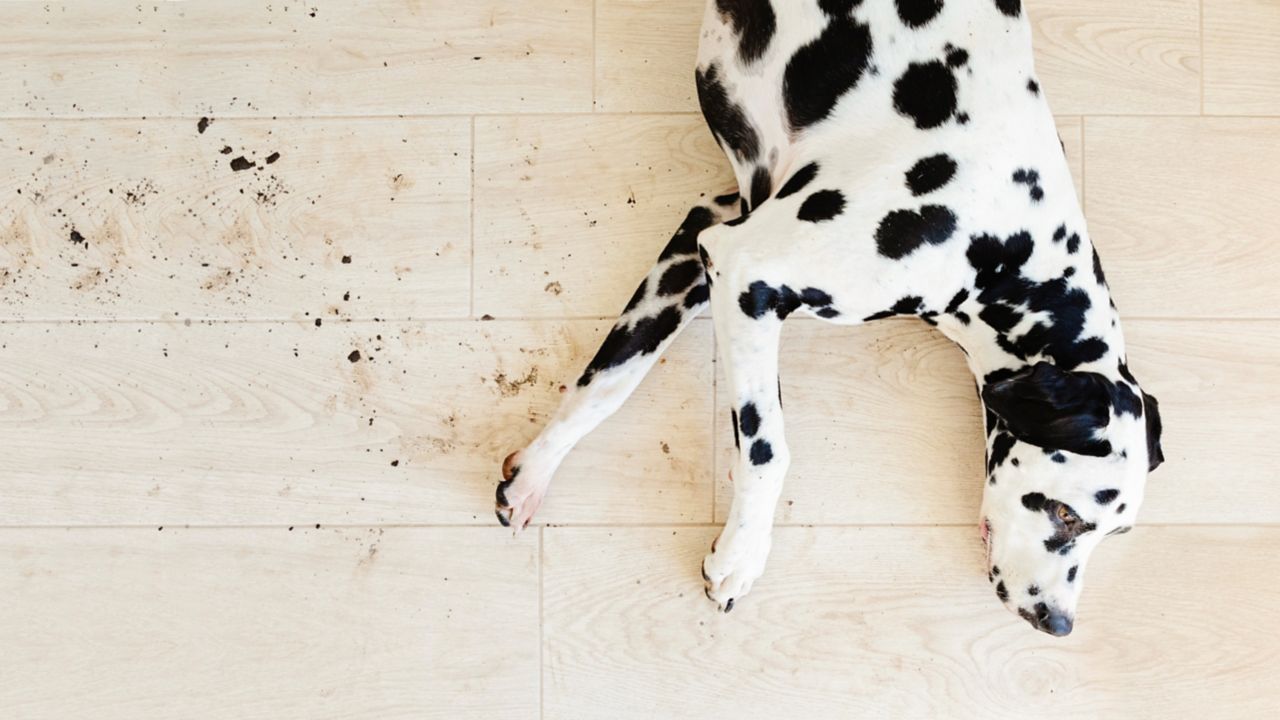
Water and Mud Resistance
One of the main functions of the entryway is to serve as the place where you change out of your outdoor gear upon arriving home. This means mud and water are tracked into this area on a regular basis.
The flooring material you choose should be able to stand up to frequent exposure to water. You will want to install flooring that won't warp, expand or become stained when water pools on it. Look for materials that are either naturally non-porous or that have an impermeable wear layer. Additionally, consider how many pieces will be required to provide coverage for the square footage of your entryway. Smaller tiles and narrow planks present more places where moisture could seep into the subfloor if there is prolonged exposure to water.
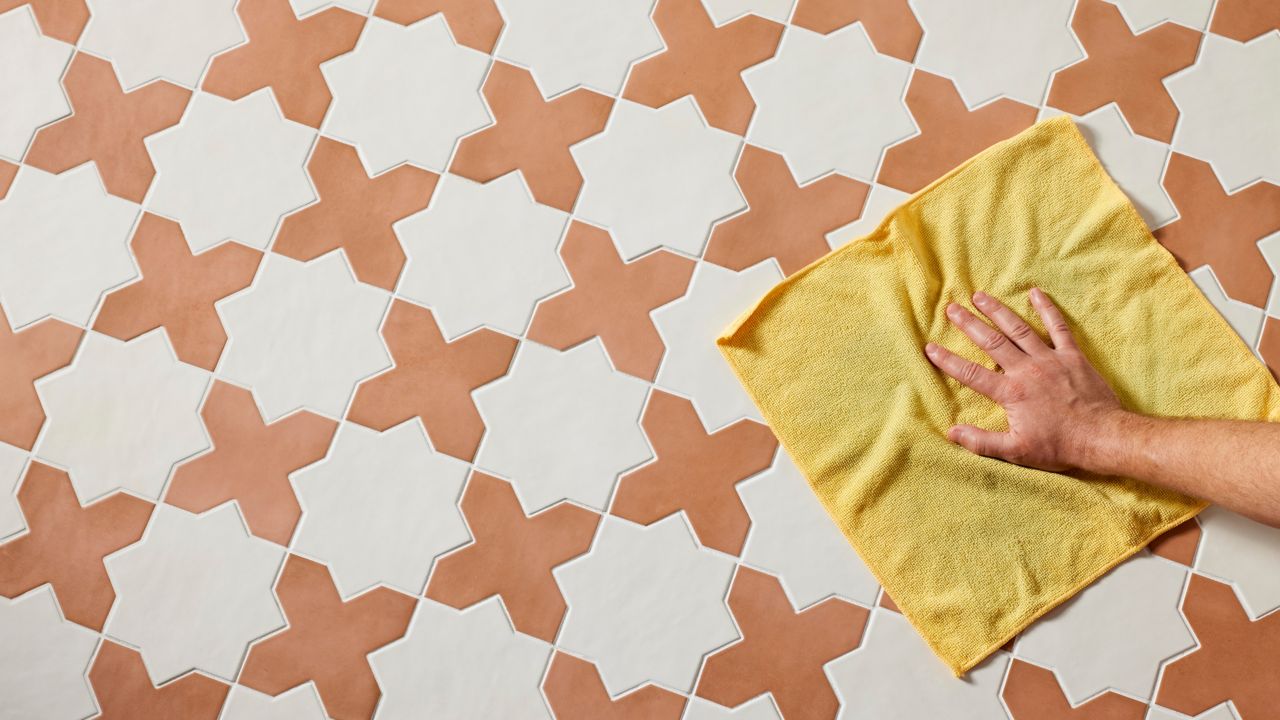
Maintenance
The process for maintaining your entryway floor will likely be different from most other rooms of your house, considering all the bits of nature that will follow you inside. There are a few steps you can take to make maintenance easier no matter what material you choose, like laying down a floor mat just inside the door and putting shoes on a rack. But even after those pieces are in place, you will want a floor that is easy to clean and won't require a lot of additional upkeep.
For tile floors, that could mean opting for a large-format tile to minimize the number of grout lines that need to be cleaned. With other flooring materials, such as natural stone or anything with a woodgrain or highly textured finish, avoid surfaces with crevices that can trap bits of mud.
In terms of ease of maintenance, nothing beats luxury vinyl. This flooring stands up to water and resists scratches like no other while being a virtually seamless surface, making it especially easy to sweep or wipe clean. Porcelain and ceramic tiles are also easy to maintain, but grout lines may require an extra bit of effort to get fully clean. Natural stone tile is as easy to clean as porcelain or ceramic tile, but it does require occasional resealing to keep it water resistant—an easy process that can be done by just about anyone in a few hours, but that will need to be performed at regular intervals over the lifetime of your floor.
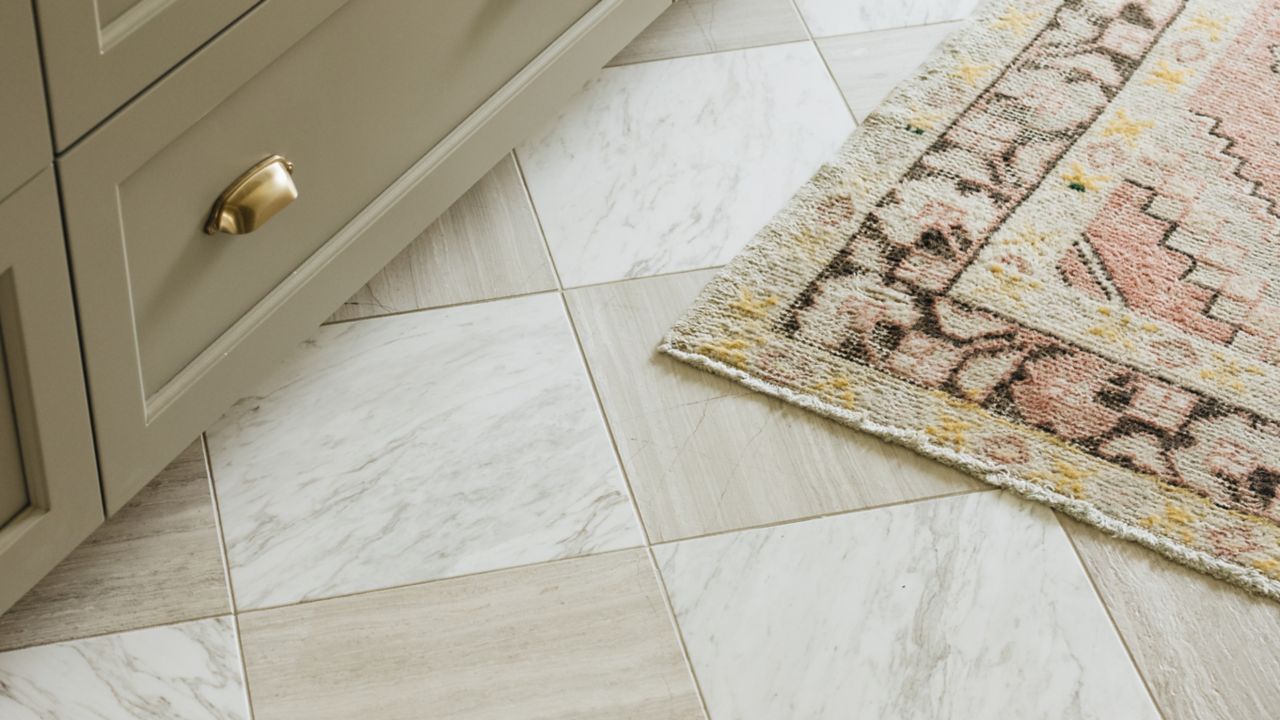
Aesthetics
While first impressions are everything, it is important to keep looks and practicalities in proper balance. After all, what good is a beautiful entryway floor if it is hard to maintain or easy to destroy with a bit of water?
With just a bit of care, you can find a wealth of flooring materials that won't require you to choose between style and durability. Even within the world of porcelain and ceramic tiles, you can achieve just about any entryway look you can imagine without sacrificing resilience. And, while the aesthetic options may not be as numerous, luxury vinyl does a very good job at approximating the look of hardwood, stone, and even cement or concrete. Versatile LVF can easily extend beyond the entryway and into the rest of your home, creating a sense of continuity.
Best Flooring for Entryways
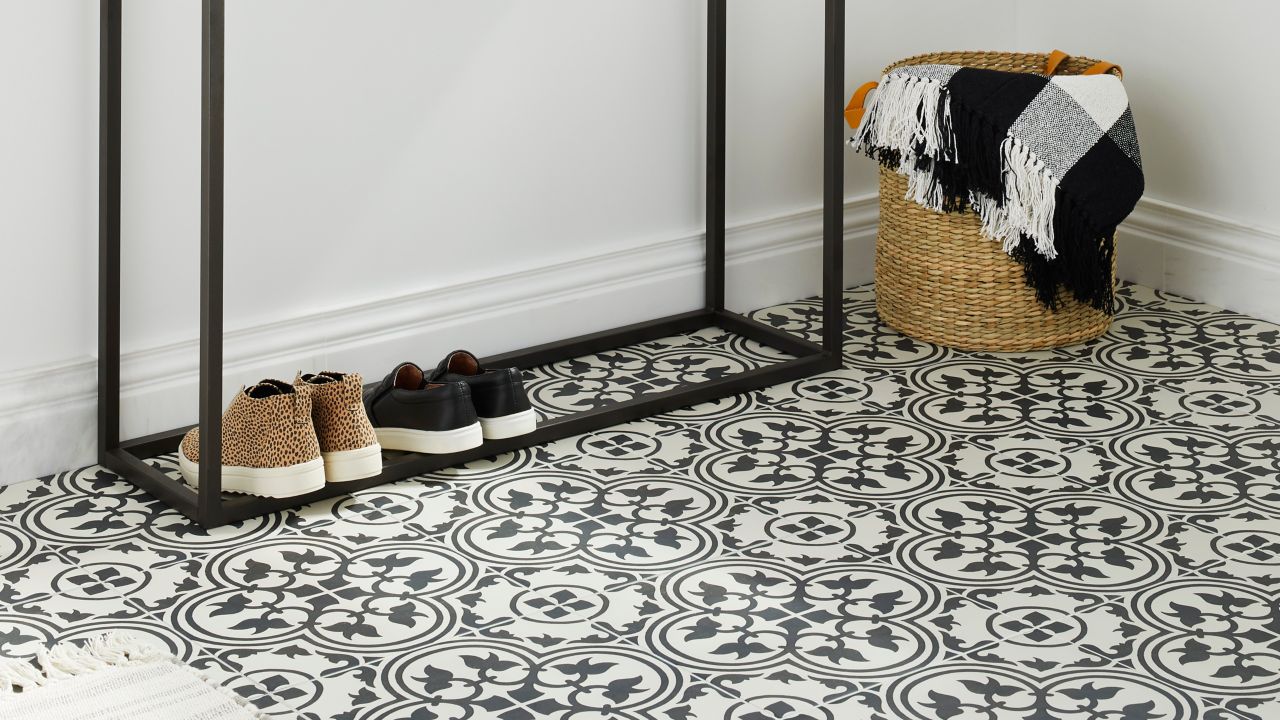
Porcelain Tile
Porcelain is a top contender for entryways due to its unmatched durability, water resistance, and design flexibility. It's denser and harder than ceramic tile, making it suitable for heavy traffic and even outdoor conditions if your entryway extends into a covered porch, lanai, or other transitional space. The wide range of colors and styles also make porcelain a versatile option, allowing you to extend the flooring out beyond the entryway to blend with the rest of your decor or to create a unique space with a look all its own.
Keep in mind that installing porcelain tile can be complex, usually requiring a professional. Porcelain can also feel cold underfoot, especially in the winter months. But the good news is that in-floor radiant heating systems play well with porcelain and won't damage the tile.
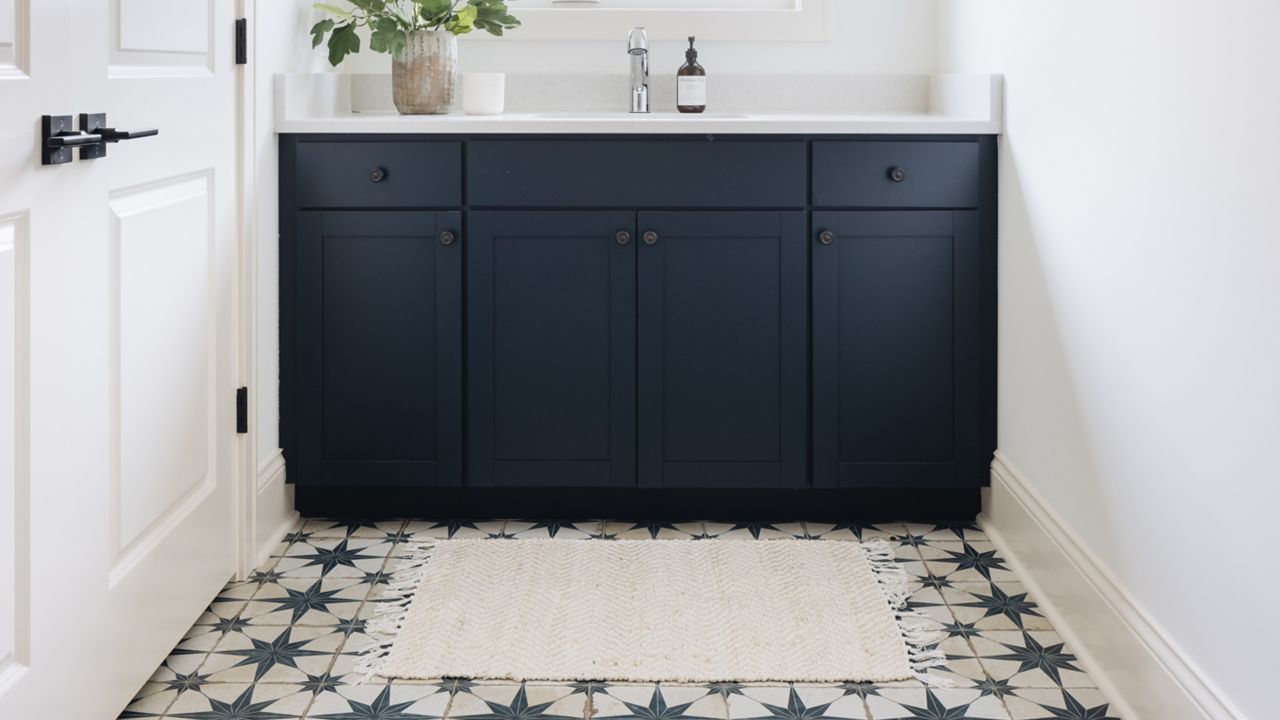
Ceramic Tile
Even though ceramic tile is remarkably durable for many uses, it is less dense—and more vulnerable to chipping and cracking—than porcelain. If there is a specific ceramic tile that you love the look of and are considering for your entryway floor, our sales associates may recommend that you select a similar porcelain style for your installation.
If you do decide to go with a ceramic tile for your entryway floor, here are a few tips to keep them in day-one condition for many years to come:
Promptly clean up liquids and wet spills.
Keep the entryway free of debris with regular sweeping.
For even more protection from grit, try laying down a thin rug that coordinates with the look of your ceramic tile.
For a more in-depth comparison between these two common tile materials, check out our porcelain vs ceramic comparison guide.
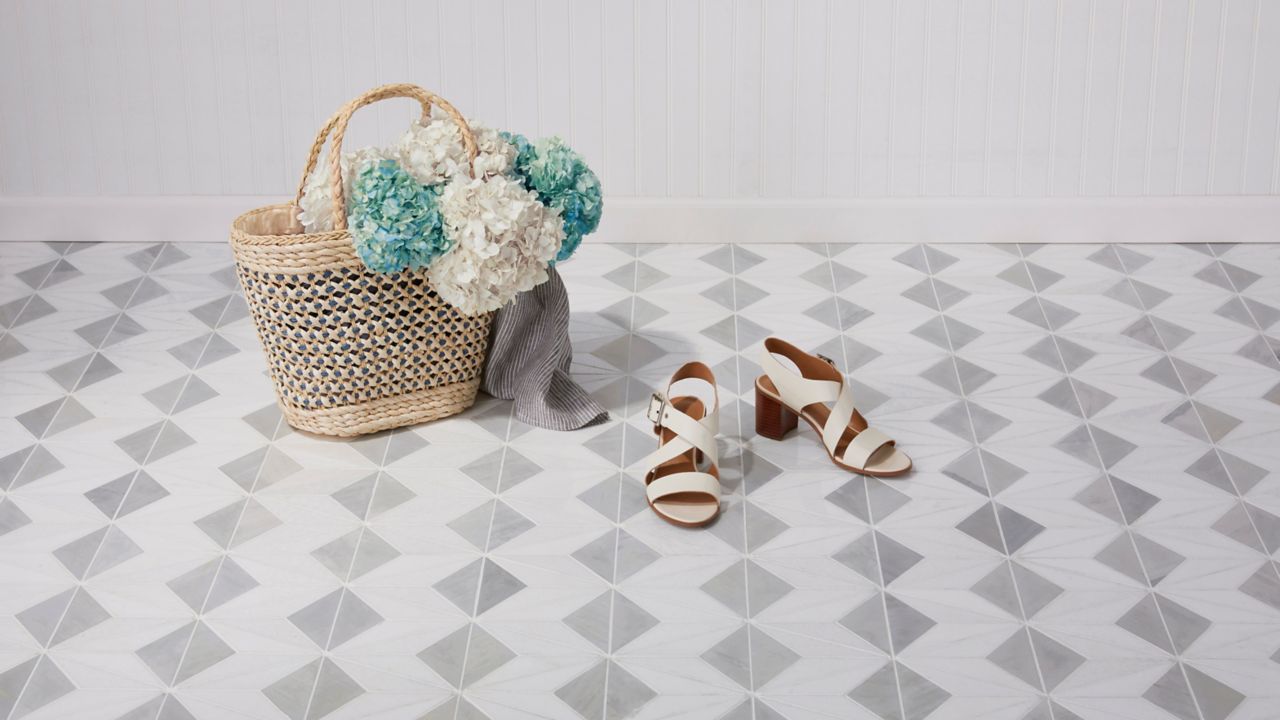
Natural Stone
Materials like travertine, slate, and limestone are all ideal materials for entryway floors. They offer the perfect combination of the rugged, rustic look of nature with the durability and water resistance required of modern homes. Whether you want to create a neutral, calming environment, or are drawn to the unique beauty and inherent variation found in nature, natural stone tile is both a smart and stylish choice.
Natural stone flooring does require periodic sealing to maintain its resistance to moisture and staining. Not to worry, though—sealing natural stone floors can easily be done by just about anyone in an afternoon, and this small investment in time will keep your natural stone floors looking their best.
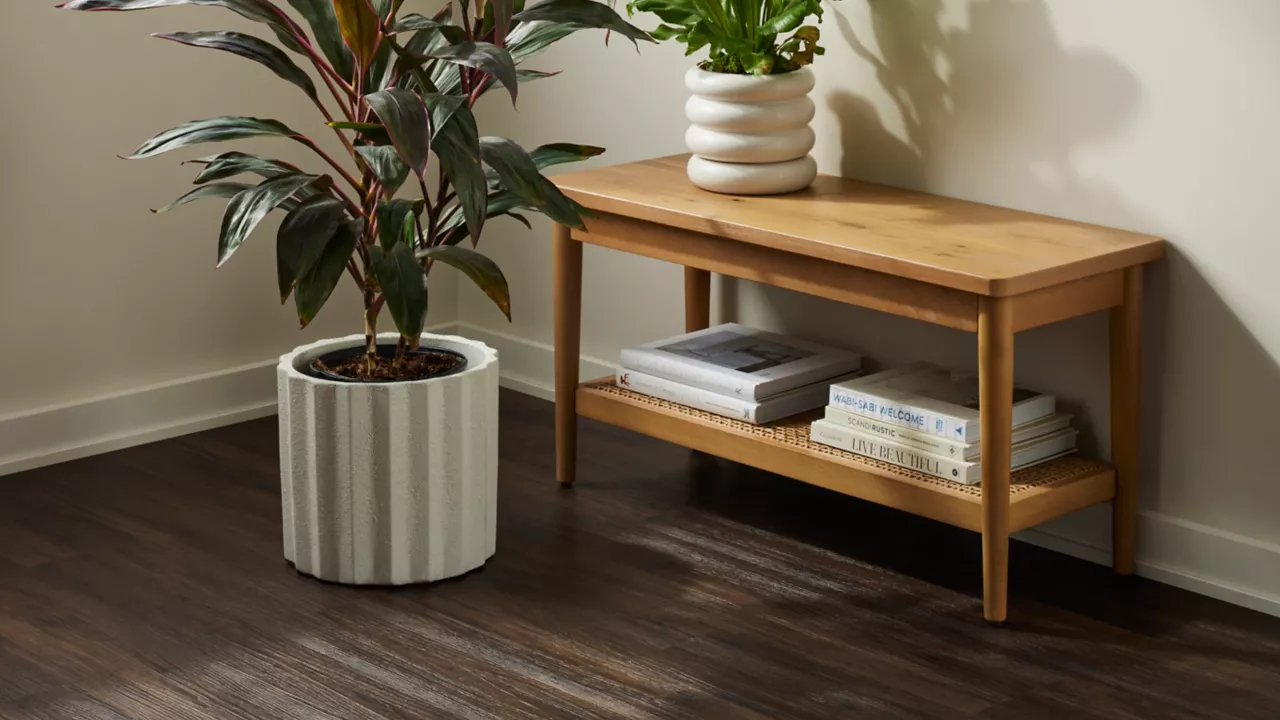
Luxury Vinyl
For entryway floors, luxury vinyl is an all-around winner. It is softer than porcelain, ceramic, and natural stone tiles, while also providing unbeatable durability and water resistance. And for the budget conscious, luxury vinyl planks are designed with a click-lock system that makes them exceptionally easy for even beginner DIYers to install. Another benefit of luxury vinyl flooring (LVF) is that it's not as slippery as other materials, and that additional traction can be very welcome when putting on or taking off wet shoes.
One thing to keep in mind about luxury vinyl is lifespan. Compared to porcelain, ceramic, and natural stone tiles, luxury vinyl will likely need to be replaced more frequently. However, the timespan for replacement is still in the decades, and the better care you take of the floor, the longer it will last.

Engineered Hardwood
If you are after a hardwood look, engineered hardwood is the best choice for entryway floors. Unlike natural hardwood floors, engineered hardwood is specifically designed to be highly moisture resistant. And the natural wood veneer on top of engineered hardwood can stand up to a decent amount of scratching and scraping.
Engineered hardwood has one major benefit over all other flooring materials on this list: it can be refinished. When any type of tile or luxury vinyl is damaged, it generally needs to be replaced to prevent further damage. With engineered hardwood, it can simply be refinished. And when you invest in higher quality engineered hardwood with a thicker veneer, this process can be done two or three times, extending the lifespan of the floor up to 90 years or more.
Design and Installation Tips
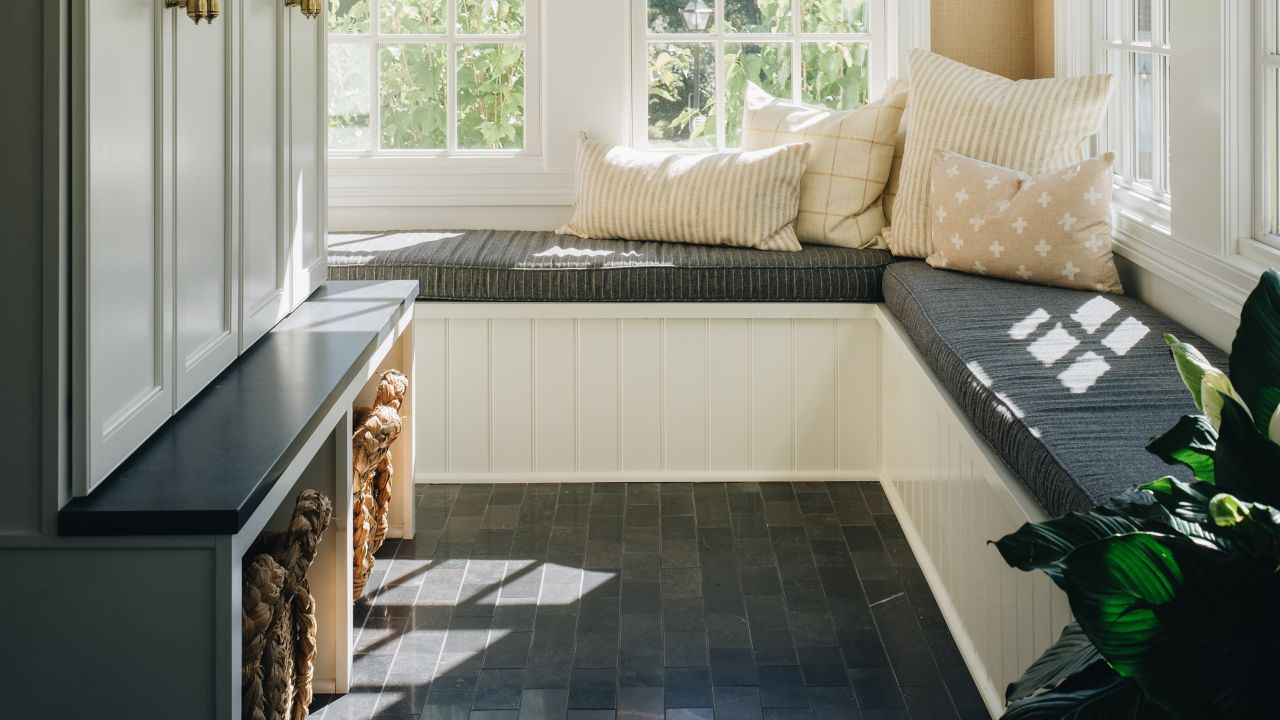
The size of your entryway and how it transitions into the rest of your home can have a big impact on both the flooring materials you use and how to choose to install them.
Start by thinking about how the entryway flooring connects to the flooring in adjacent rooms. If the entryway is its own small area, you may want to go with a look that defines the area and makes a warm, welcoming statement. Using a different material from the rest of your home's flooring can be a way to reinforce this feeling. But if your entryway is particularly small, be sure to avoid small tiles, as those can make a small space feel cluttered.
On the other hand, if your home has an open floor plan, there may not be much (or any) physical separation between your entryway and the rest of your living space. In this case, installing a different flooring material around your front door can provide visual distinction from one zone to the next. Alternatively, you might consider installing the same flooring material in a different layout—for instance, creating a section that is laid out in a herringbone pattern to contrast with the traditional offset installation style—to define the entryway without drawing too much attention to it.